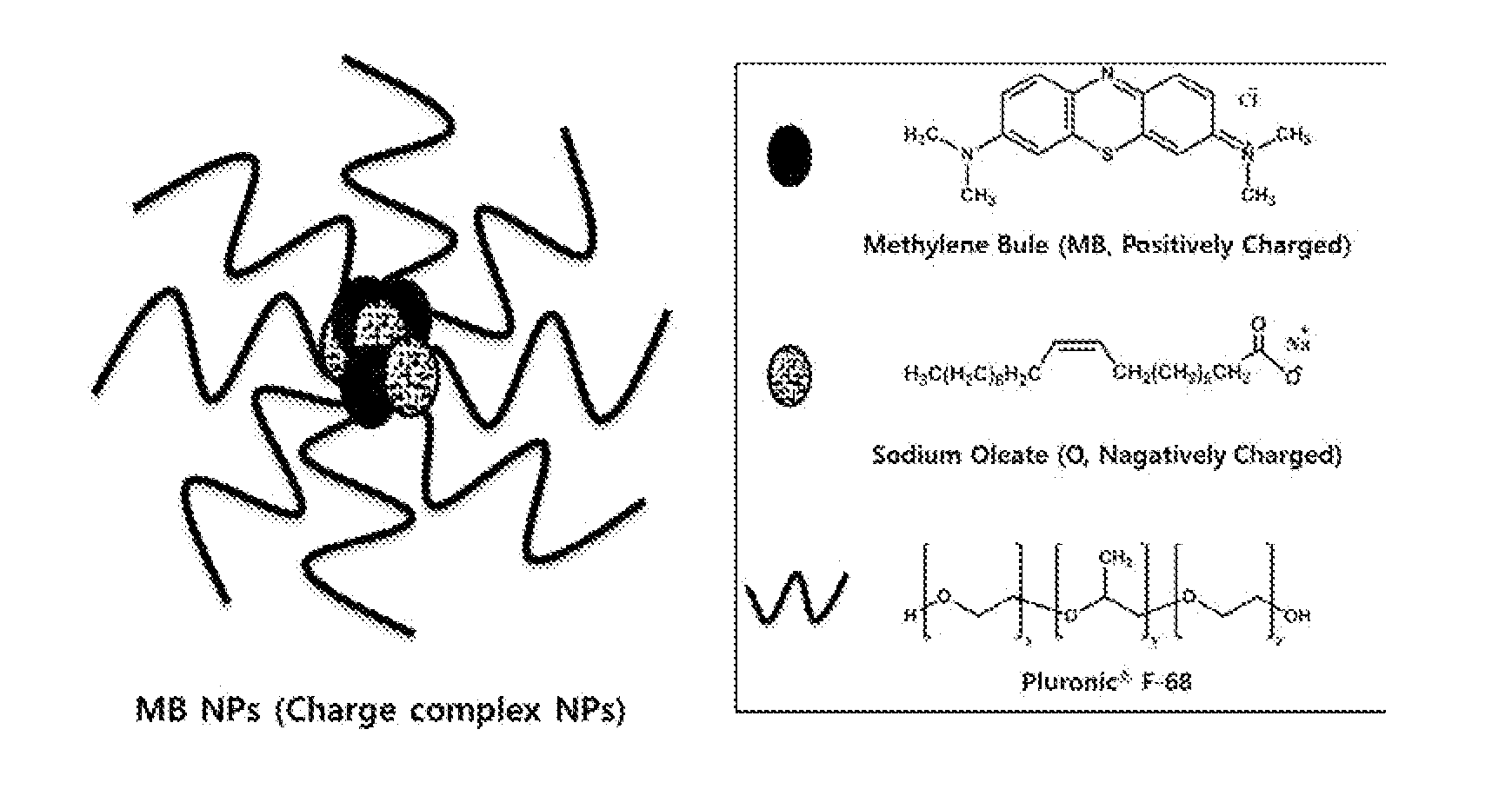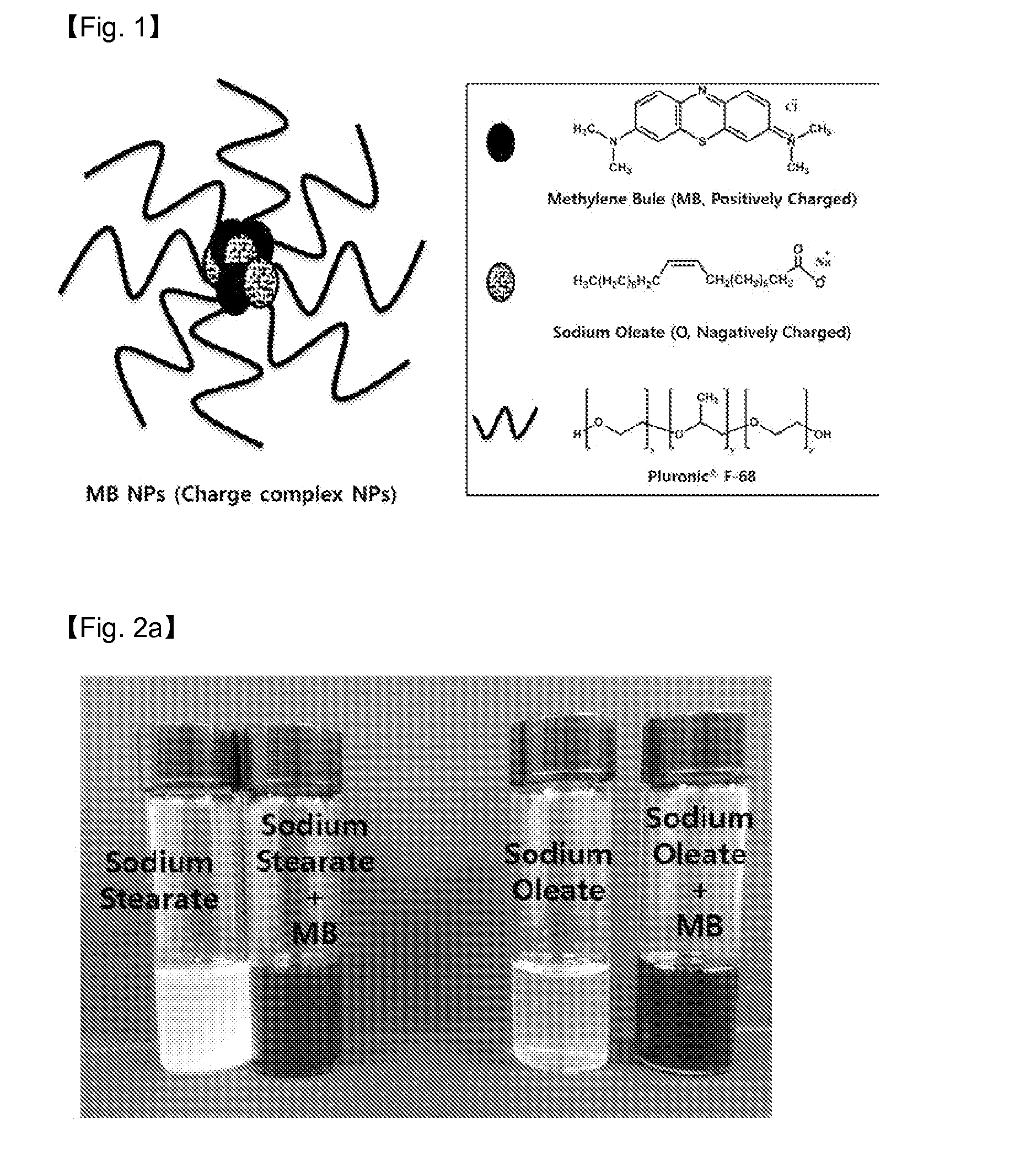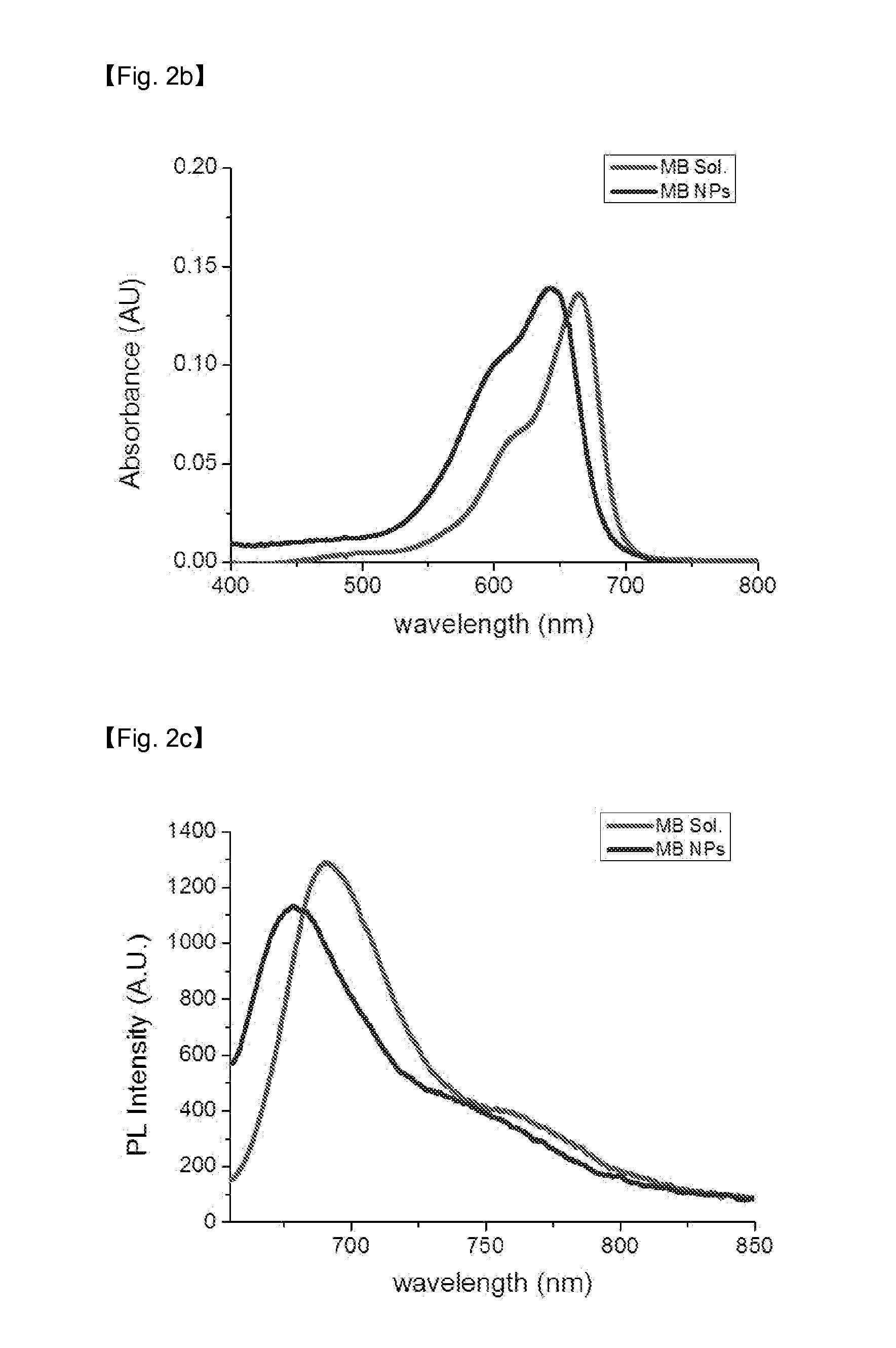Methylene blue nanoparticle for bioimaging and photodynamic therapy and use thereof
a bioimaging and photodynamic therapy technology, applied in the direction of drug compositions, diagnostic recording/measuring, ultrasonic/sonic/infrasonic diagnostics, etc., can solve the problems of low photosensitivity, high supply price of these photosensitzers, and still require a lot of time and economic support until clinical use, etc. , to achieve excellent topical cancer targeting property, low barrier to clinical entry, and high possibility of commercialization
- Summary
- Abstract
- Description
- Claims
- Application Information
AI Technical Summary
Benefits of technology
Problems solved by technology
Method used
Image
Examples
example
Example 1: Formation of Self-Assembled Nanoparticles Comprising Methylene Blue As Photosensitizer in Aqueous Environment
Preparation and Evaluation of Self-assembled Nanoparticles Using Oleate
[0057](1) Hydrophobic Modification of Methylene Blue / Sodium Oleate by Electrostatic Force
[0058]20 mg of methylene blue (MB, Aldrich Chemical Co.) and 30 mg of sodium oleate (O, Aldrich Chemical Co.) were dissolved in 100 mL of tetrahydrofuran (THF, Daejung Chemical Industry Co., Ltd.) by heating at 60 to 90° C. for 1 to 5 minutes.
[0059]A stable methylene blue / sodium oleate complex (MBO) was formed by electrostatic force and hydrophobic interaction in a molecular structure, thereby exhibiting high solubility to the solvent.
[0060]Remnant sodium oleate and other impurities were removed from the MBO solution using a syringe filter (5 μm), and then MBO was obtained by following freeze-drying.
[0061](2) Preparation and Evaluation of Nanoparticle Comprising MBO and Amphiphilic Polymer
[0062]0.2 mg of MBO...
example 2
n of Capacity of Generating Singlet Oxygen of Self-Assembled Nanoparticles (MB NPs) Comprising Methylene Blue As Photosensitizer in Aqueous Environment
[0071]In order to use MB NPs dispersed in water as a photosensitizer for photodynamic therapy, the capacity of generating singlet oxygen of the nanoparticles according to the laser irradiation was determined and compared to that of MB dissolved in water (MB Sol.). A laser with a wavelength of 655 nm which is known to be capable of producing singlet oxygen (Chanchun New industries Optoelectronics Tech. Co., Ltd., ex=655 nm, 200 mW output power) was used.
[0072]The amount of singlet oxygen produced was measured by a chemical method using N,N-Dimethyl-4-nitrosoaniline (Aldrich) which is combined with singlet oxygen to lose the inherent OD max value.
[0073]FIG. 4 illustrates the result, confirming that MB NPs showed a capacity of generating singlet oxygen, which is equivalent to that of MB Sol. at 37° C. which is a temperature suitable for...
example 3
n of Cancer Cell Accumulation and Characteristics of Self-Assembled Nanoparticles Comprising Methylene Blue As Photosensitizer in Aqueous Environment
(1) Evaluation of Accumulation of MB NPs in Cancer Cell
[0075]In order to determine if the nanoparticles (MB NPs) prepared in Example 1 would be accumulated in the cancer cell, 1×105 of each of cancer cells MDA-MB-231 (breast, mammary gland / human, Korean Cell Line Bank), MCF-7 (breast, mammary gland / human, Korean Cell Line Bank), PC-3 (prostate; grade 4; metastasis to bone / human, Korean Cell Line Bank), HeLa (cervix / human, Korean Cell Line Bank), and HT-29 (Colon / human, Korean Cell Line Bank) was respectively dispersed in 2 mL of cell culture solution [DMEM (WELGENE) culture solution was used for the HeLa cell, and RPMI1640 (WELGENE) culture solution was used for the other cells]. And then the solution was put into a dish for cell culture (35 mm, glass bottomed dish), and cultured in a culture chamber (5% CO2, 37° C.). After 24 hours, th...
PUM
| Property | Measurement | Unit |
|---|---|---|
| diameter | aaaaa | aaaaa |
| wavelength | aaaaa | aaaaa |
| temperature | aaaaa | aaaaa |
Abstract
Description
Claims
Application Information
 Login to View More
Login to View More - R&D
- Intellectual Property
- Life Sciences
- Materials
- Tech Scout
- Unparalleled Data Quality
- Higher Quality Content
- 60% Fewer Hallucinations
Browse by: Latest US Patents, China's latest patents, Technical Efficacy Thesaurus, Application Domain, Technology Topic, Popular Technical Reports.
© 2025 PatSnap. All rights reserved.Legal|Privacy policy|Modern Slavery Act Transparency Statement|Sitemap|About US| Contact US: help@patsnap.com



